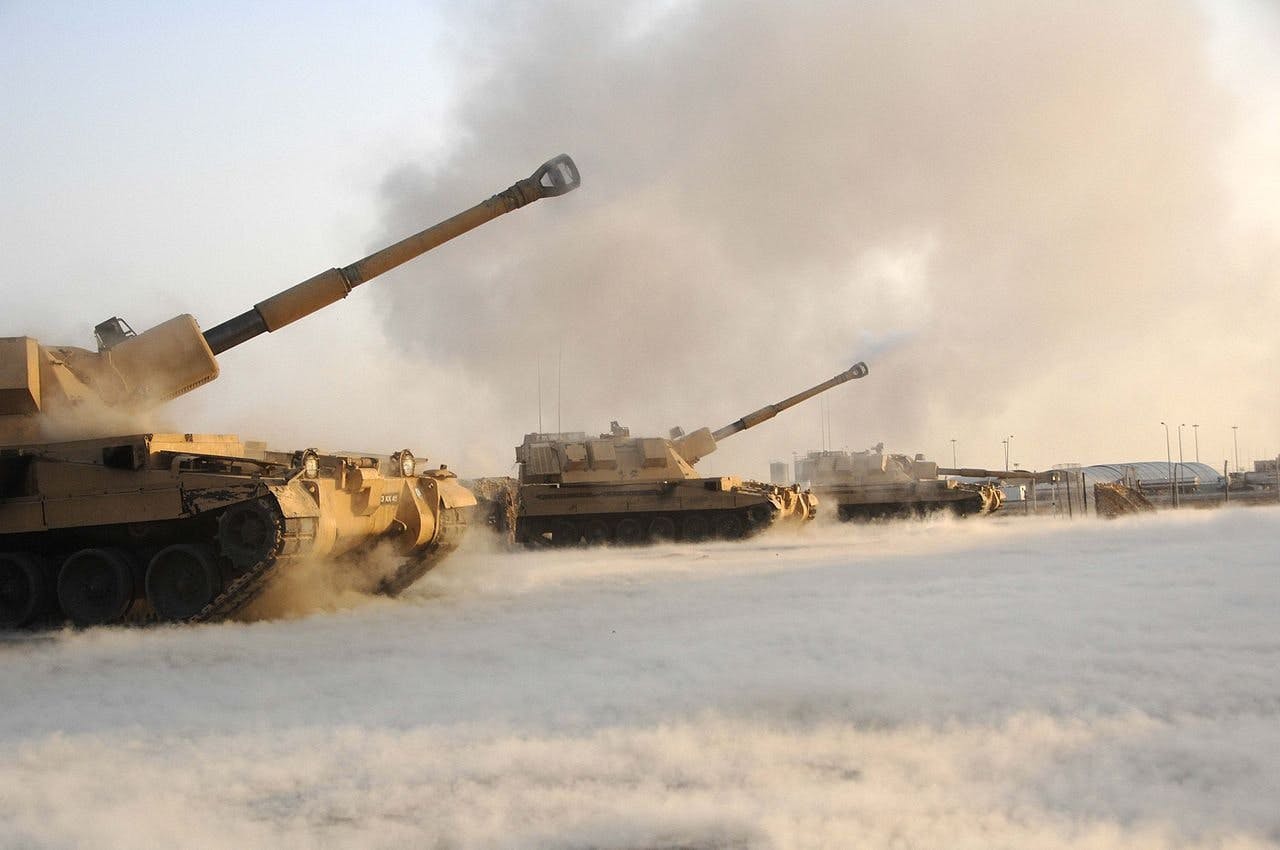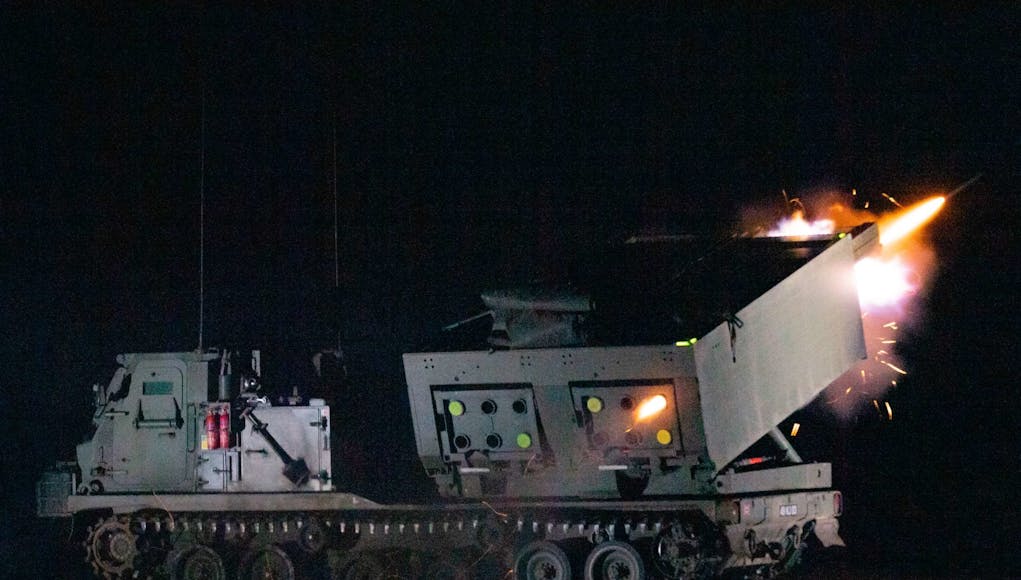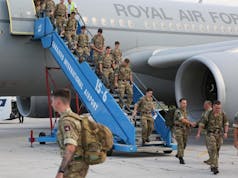The British Army wants to understand future requirements for the defence of artillery positions.
Current practice requires soldiers to surveil ground in the vicinity of artillery positions to protect from adversarial intrusion and attack, “increasing workload and cognitive burden”.
According to the contract notice, it is hypothesized that Remote Piloted and Autonomous (RPAS) Systems with sensory suites and AI could reduce this burden and increase combat effectiveness.
According to the notice:
“Successful applicants should be prepared to conduct experimentation with 1 Artillery Brigade on Salisbury Plains in the window 10-18 September 2021 (duration likely to be 3 days). Likely tasks includes OEM operating experimental system in a representative warfighting environment against an active enemy force, briefing soldiers on use and possibly enabling limited supervised use, assisting 1 Artillery Brigade with developing Concepts of Use (CONUSE) and Concepts of Employment (CONEMP) for RPAS to inform future capability requirements.”
The contract notice also goes on to explain how the system could look:
“RPAS systems for consideration could be ground-based (including unmanned ground sensors) or aerial but must be small and agile enough to be deployed from eg ¼ tonne trailer.
The system must be remote or autonomously controlled; must have a sensory suite, ideally modular and interchangeable by the operator; must be able to collect data from at least one spectrum, ideally from the visible or near-visible spectrum, and ideally use AI to process the collected data; must operate as part of a digital network, ideally able to distribute collected data to multiple users others than the operator eg via ATAK; must be capable of operating in adverse weather conditions, ideally in all weather conditions; must be able to operate day and night; must have duration greater than 1 hour on task.”
1st Artillery Brigade commands the majority of the British Army’s Close Support Artillery Regiments and provides special-to-arm oversight for the two Very High Readiness regiments in the Air Assault and Commando Brigades.

The brigade operates a number of light artillery guns and of coruse heavier equiment such as the AS90 and MLRS systems.














Must be remembered that 1 Art Bde is a primarily administrative formation. It is a “holder” for the gun and rocket regiments of the RA which deploy with their brigades, and I believe also acts as RPOC for Wessex region.
The suggested transformation of 1 Art Bde into the DSBCT by joining MLRS with orphaned Ajax regiments is interesting.
If the BCT rhetoric in the DCP is realised each heavy and light will need organic artillery (the point of BCTs is they are fully formed with all supporting arms organic, and deployment ready), also the creation of a long-range fires BCT would suggest 1 Art Bde becomes more than administrative. We await plans and a new ORBAT.
Agreed. That was the thrust of my point, a deployable brigade hopefully.
Always amazed me at how few deployable brigades we could put in the field.
How they find the enablers for it remains to be seen. The planned 2 Strike and 2 Armoured Brigades had sufficient, as RE, RA, RS, REME, RLC and RAMC regiments and battalions exist for them. but adding a 5th in this proposed formation leaves gaps in assigned RLC, RS, REME assets. Unless they plan to just use regimental LADs re REME for example.
I’m really looking forward to studying the new ORBAT and spotting the slights of hand they then dress as an improvement.
I feel we could simply do with more artillery, rather than worrying about buying drones to protect it.
would a schiebel s100 be too expensive and too much for this function? can put anything from LIDAR to microwave radar etc on it. 6hours on station.
Have the government/mod decided on track or wheels for new artillery yet? I’ve not read or seen anything new on this decision for a long time
I suspect wheels Ulya. CEASAR and Archer, two systems commonly linked to the future fires programme, are both wheeled.
the planned new artillery types are going to be partially or fully autonomous so fewer men to conduct protection tasks, I think this where the idea comes from.
Lets hope they don’t resurrect the Phoenix as a cost cutting measure.
They might Farouk, but they better let BAE Systems wipe them over with a damp cloth first to get the dust off, for a paltry £800 million.
Make it a billon and you get wax polish too…..
With glued on rivet heads for that robust look.
I’ve already offered BAE Systems a bag of split dried peas Jonathan….😂😂
At an appropriate £10,000 per split pea.
First of all we need some Arty to defend!
To be fair airborne, not sure how you can defend yourself against something like Spear3, you can guarantee the Russians and Chinese will have similar systems in development.
Slow moving, difficult to transport (and static) Artillery is going to be a sitting duck against a peer enemy in the future.
It certainly shows to me anyway, the need for agile wheeled and air mobile systems.
Shoot and scoot as they say!
If artillery still do shoot and scoot, and stay in a firing position for just minutes, why bother with drone surveillance?
I would have thought that the best way that drones could support artillery would be in spotting the targets for them?
Not really sure if the RA gained much with the AS90 over the M109 to be honest,but hope there get what there choose.Just for a matter of interest can anyone tell me when RA got rid of there 155 field Guns.🤔
Was that the FH70? I remember there were 3 Regiments worth but forget exactly when they went. Probably Options for Change period.
Wiki says FH70 were withdrawn from TA arty regiments in 1999.
I think they were retired from front line service when the army introduced the AS90. If I remember correctly at the time, the AS90 was touted as being able to provide a capability which saw 4 systems removed – 105 mm Abbot. 155 mm FH70/M109 and I think either the 175 or 208 mm systems we had.
In essence this was sold as a capability, but in truth were cuts, as we never received the numbers of AS90s that they replaced!
How unusual. It’s not like that’s ever happened before….🙄
Thanks Guys